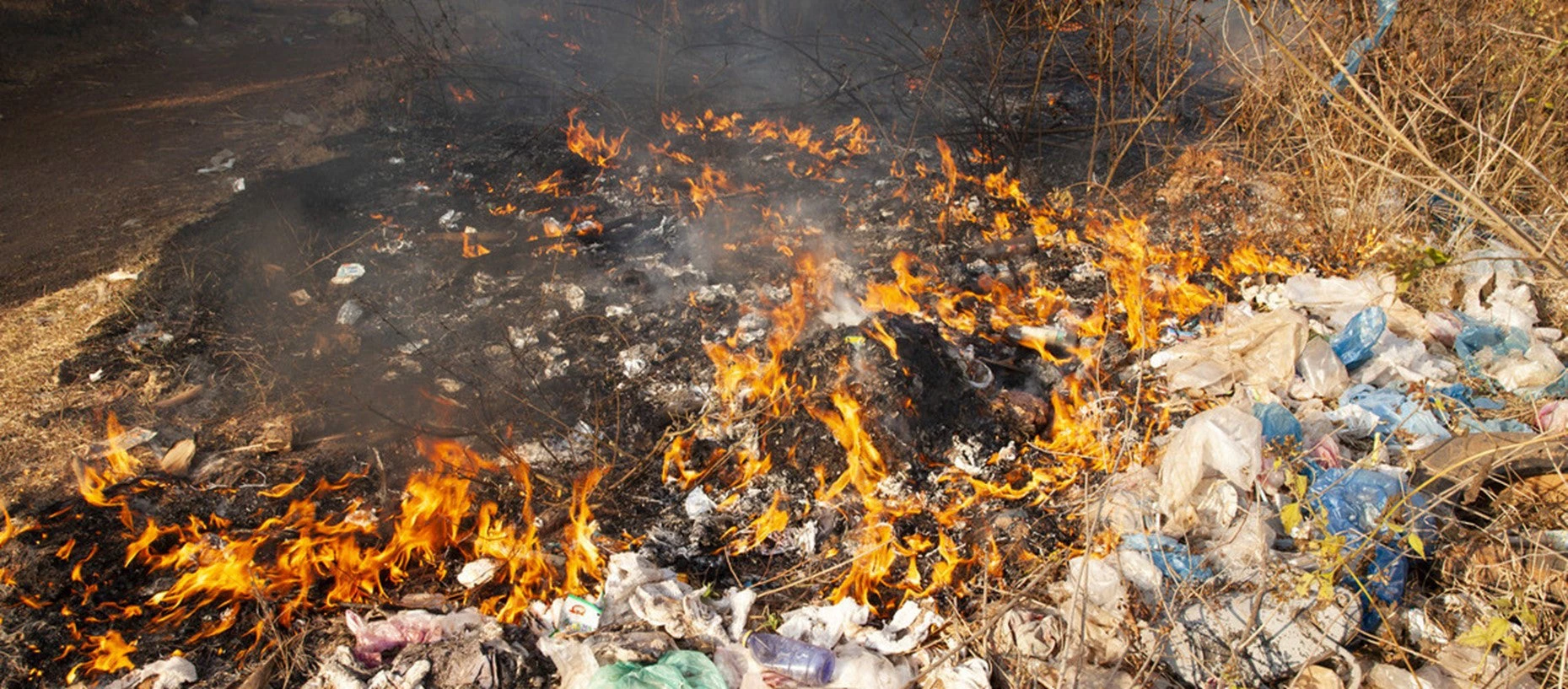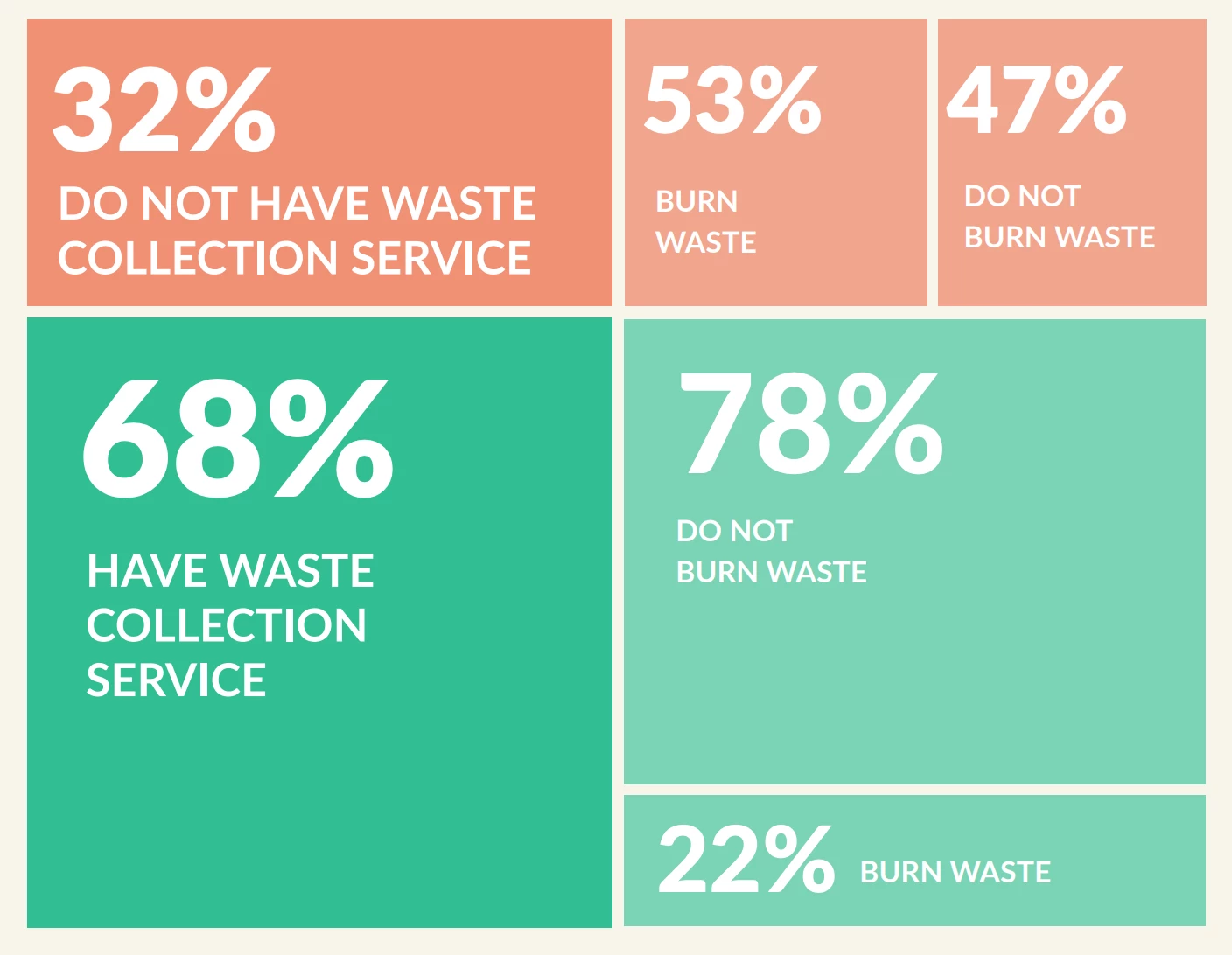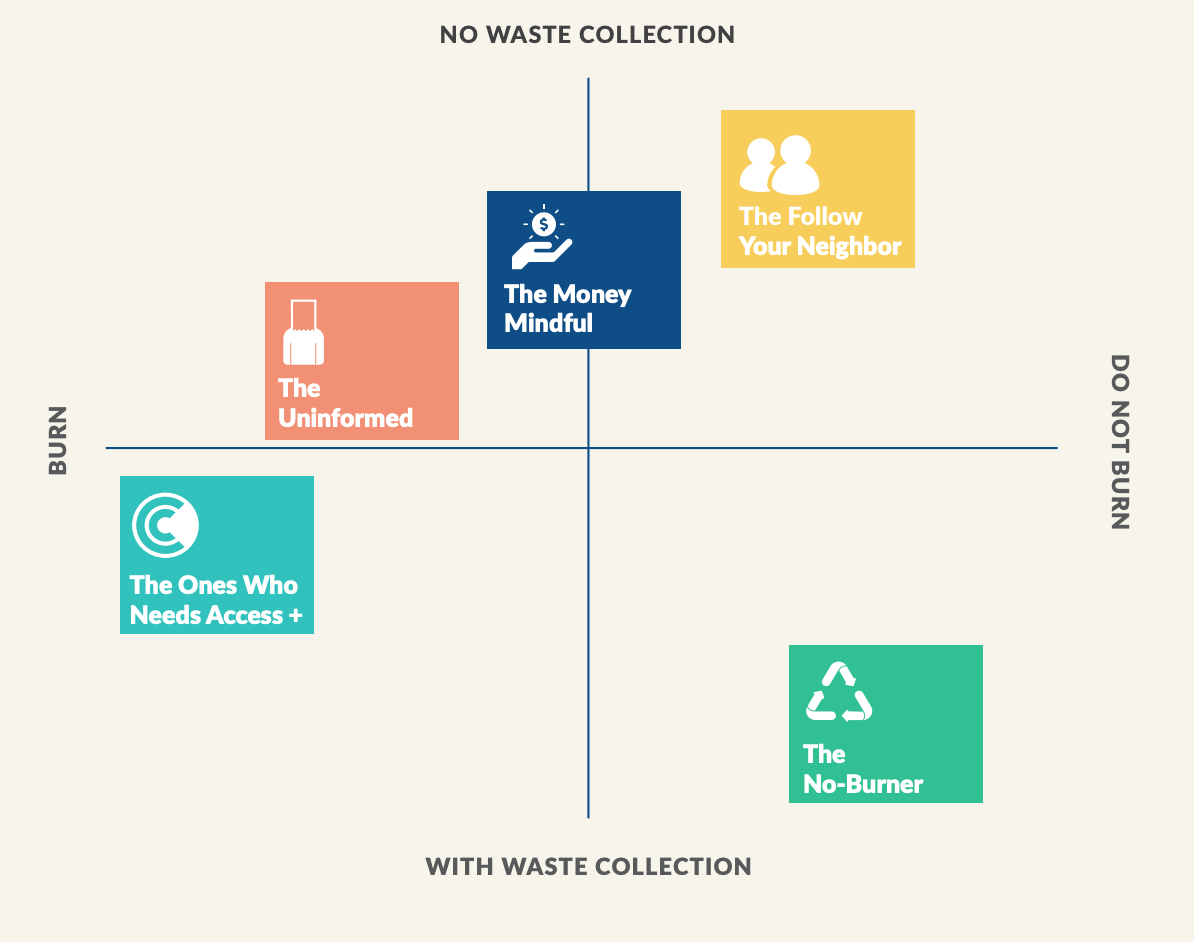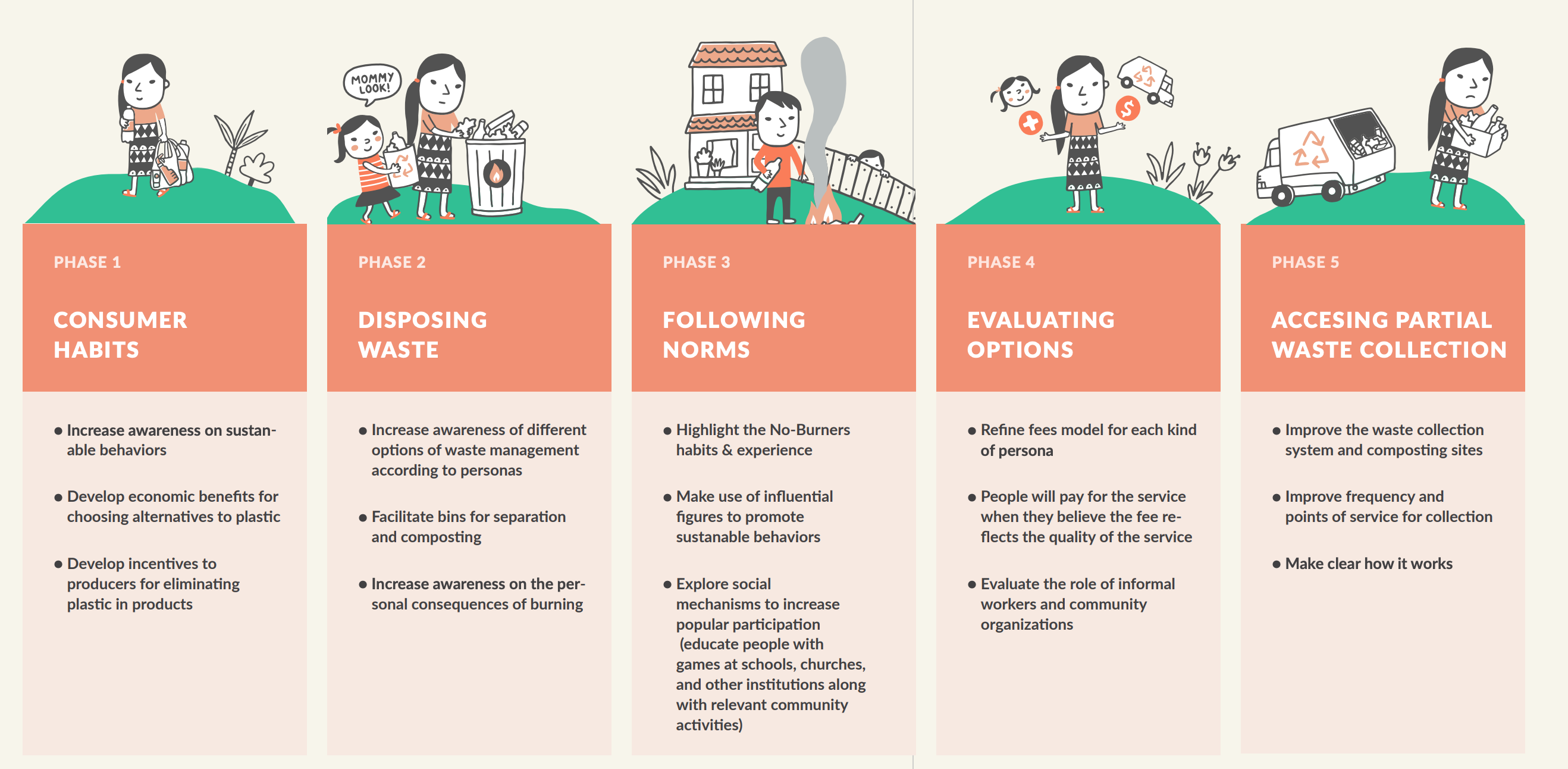 Open burning of waste has severe health, environmental, and economic consequences. Photo: Xaisongkham Induangchanthy/World Bank
Open burning of waste has severe health, environmental, and economic consequences. Photo: Xaisongkham Induangchanthy/World Bank
Despite its health, environmental, and economic costs, burning of waste still a common practice in the Lao PDR, where approximately 4,400 people die from household air pollution annually.
A World Bank study surveyed over 1,900 Lao citizens to learn about the habits and beliefs surrounding open waste burning. Almost a third reported that waste was generally burned at home, with the other two-thirds saying they instead used waste-collection services, recycled, or reused their waste. Interestingly, about a third of respondents reported having no access to waste-collection services. Better access to waste collection services and communal composting sites is needed to help this group stop burning. Among households where open burning occurs, 70% reported making fires in their backyard.
Figure 1. Waste management behavior in Laos
Although lack of access to resources remains the biggest hurdle in preventing open waste burning, understanding and targeting different groups can help the government strategize better. We identified five groups of people, or “personas”, and based on their waste-management beliefs and behavior, placed all the respondents into the following categories, along with recommendations on how to influence their attitudes.
Figure 2. Personas by waste-management beliefs and behavior
These personas are non-exclusive, meaning that one person might fall under more than one persona:
- The No-Burners. This group, comprising 68% of the sample, tends to be older and more educated; they live in households of one-to-four people in large cities. The government could enlist no-burners to help educate others on the health, financial, and other benefits of sustainable waste disposal, perhaps for example promoting its contribution to cleaner air or facilitating community interaction through workshops and public activities.
- The Uninformed. 18% of those surveyed said they burn waste because they don’t know how to access the waste-collection system, don’t think they need it, are unaware of the harm of burning waste, or don’t know how to handle waste. These respondents are generally young, lacked education, and lived in rural areas. This group could be offered information about best practices for disposing of waste.
- Those Who Need Access. Around 24% of the sample primarily burn waste because they don’t have access to waste collection. The respondents, who tend to be young males living in rural areas, are less likely than other groups to believe it is important to stop burning their rubbish. For this group, the focus should be on bringing access to and information on waste-management alternatives, and on the benefits of not burning waste.
- The “Follow Your Neighbor.” This 4% of the sample burn their waste weekly and are strongly influenced by social norms — they report burning waste because their friends and family do so. They tend to be young people with low education levels, living in large rural households. To convince them to change, the government could show them how other people dispose of their garbage in a more positive way, while making such options available to them.
- The Money Mindful. The 10% who fall into this group burn rubbish because they don’t want or can’t afford to pay waste-collection fees. Generally young females in rural areas, these people don’t generally view waste-burning as unhealthy. For members of this group, the government should provide more salient comparisons between service fees and the monetary, health, and social costs of burning waste. Involving this group in the circular economy and selling of recyclables might generate profits that could encourage sustainable behavior.
The study also evaluated the influence of different messages on the beliefs and intentions of these personas. Messages focused on the health consequences and monetary costs of burning waste, such as the negative impact of burning on them and their family, proved to be more effective than telling people about air pollution. However, none of the messages tested were effective at changing the behavior of those without access to waste-collection services.
The following recommendations can help improve the Lao waste-collection system:
- Adapt fees to reflect the quality of the service. People need to think the price is fair in relation to the service provided.
- Improve waste-collection service practices by including private, informal, and start-up companies focused on sustainable alternatives in discussions and plannings.
- Increase awareness through timely information campaigns. The use of influential figures at schools, temples, and other institutions can help grab attention and convey personalized messages.
Figure 3. Recommendations
Inadequate waste collection resources, lack of trust, financial barriers, consumption patterns, and a lack of awareness of health consequences all contribute to this issue. To mitigate this growing environmental and public health problem, investment in services, combined with strategies aimed at shifting beliefs and behavior are needed.
Want to learn more? Read our Behavioral Insights to Reduce Open Waste Burning in Lao PDR: Behavioral Insights and Policy Options.
Visit our website to learn more about our work, stay connected, and reach out to us.









Join the Conversation